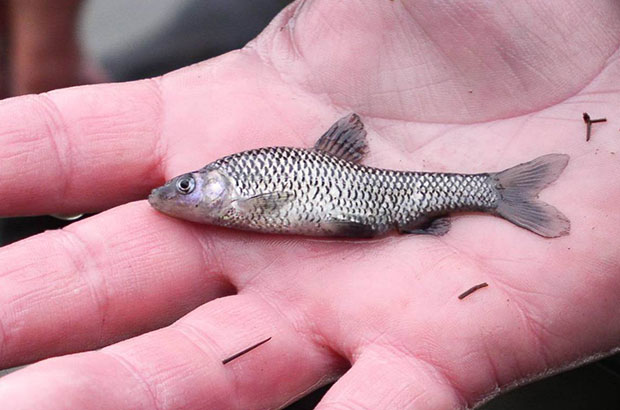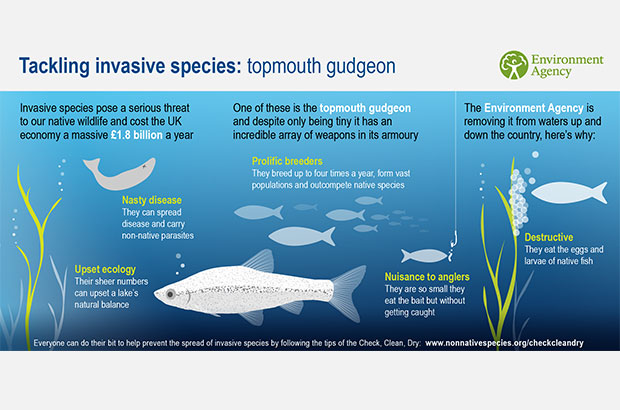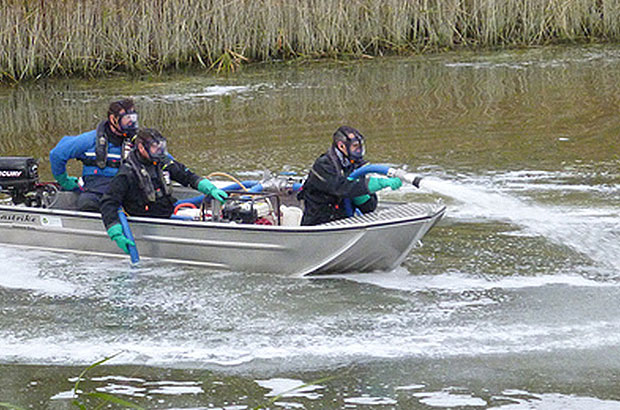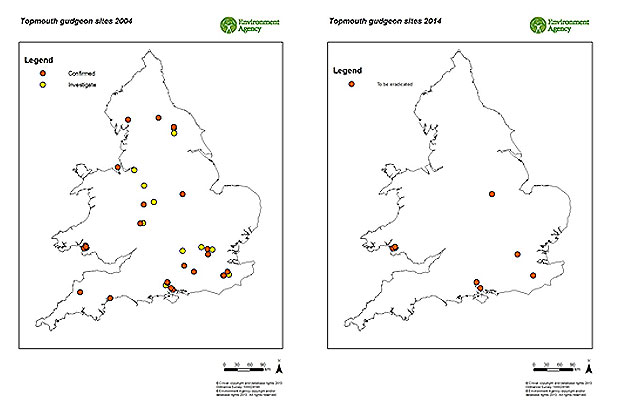
The Environment Agency (EA) National Fisheries Services are leading the way in the UK developing tools and techniques to contain, control and eradicate high risk invasive non-native fish species
The topmouth gudgeon Pseudorasbora parva, is a small non-native coarse fish from Asia, introduced to the UK from mainland Europe in 1984, and first formally identified at a fish farm in Hampshire in 1986. Following introduction, the species spread, through a number of routes including fish farm movements and the ornamental fish trade, invading stillwater sites across England and Wales. 23 populations have been formally identified from Cumbria and Yorkshire in the North of England, to the Midlands, South Wales, and from Devon to Sussex in the South of England.
How damaging is it?

Topmouth gudgeon is considered to be one of the most potentially damaging non-native fish species to invade Western Europe. It is classified under the Import of Live Fish Act (1980) as a ‘Category 5 species’, being of highest risk, and Red Listed by the UK Task Action Group’s Alien Species Group.
It is highly effective invasive species, dispersing easily, achieving rapid sexual maturity and is highly fecund. Its diet is broad, enabling it to out-compete native species, and it preys on native fish eggs. Tolerance of poor environmental conditions is also high and populations may carry novel parasites and disease that can impact upon native fish species.
Evidence from mainland Europe and studies within the UK indicated that should topmouth gudgeon spread sufficiently and become established in UK waters, the impacts on our native species and the fisheries they support could be severe.
Eradication progress

The EA began localised eradication operations using a rotenone based piscicide in 2004 at the most northerly known sites in Cumbria and Yorkshire, these proved very effective and a Water Framework Directive funded 5 year eradication programme was implemented in 2010, with the objective of total removal of the species from GB by 2017.
Of the 23 confirmed topmouth gudgeon sites, we have now eradicated 15 and monitoring to date indicates that all operations have been effective, with no recurrence of the species at treated sites. A further 12 potential sites remain under investigation but to date all have proven negative for the species.
There are now only 6 confirmed sites remaining in England, confined to the Midlands and the South East, and we are on schedule to complete the eradication programme by 2017, removing this invasive species from England. (N.B. a further 2 sites remain in Wales under the control of Cyfoeth Naturiol Cymru – Natural Resources Wales)
Future work

The scale of this work has been challenging, requiring eradication of topmouth gudgeon from a range of sites from small 1 acre ponds to 80 acre multi-lake fishing complexes, fish farms and open stream systems. Our success to date demonstrates that total eradication of topmouth gudgeon from England remains feasible and, subject to continued funding, we are on target to achieve our programme objective by 2017.
Further information on topmouth gudgeon can be found at Non Native Species Secretariat.
If you want to find out more about what we do please contact me.
For updates please sign up to email alerts from this blog, email me or you can follow us on Twitter @CefasGovUK.